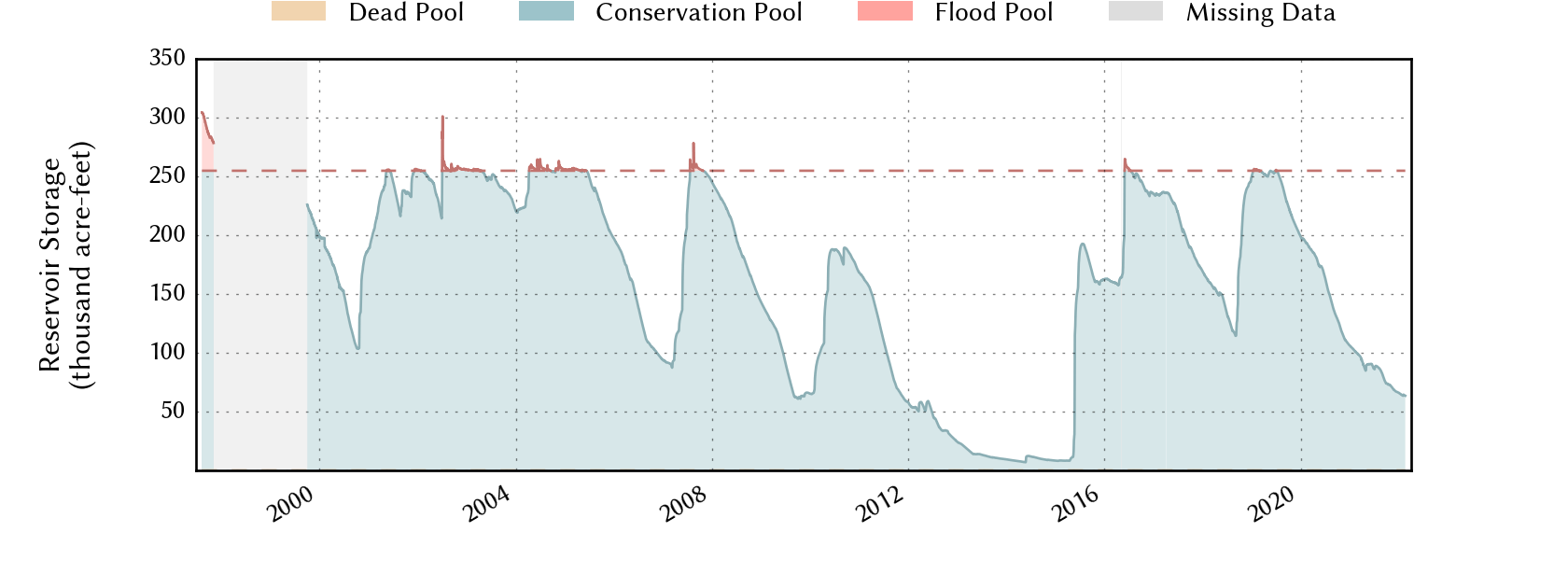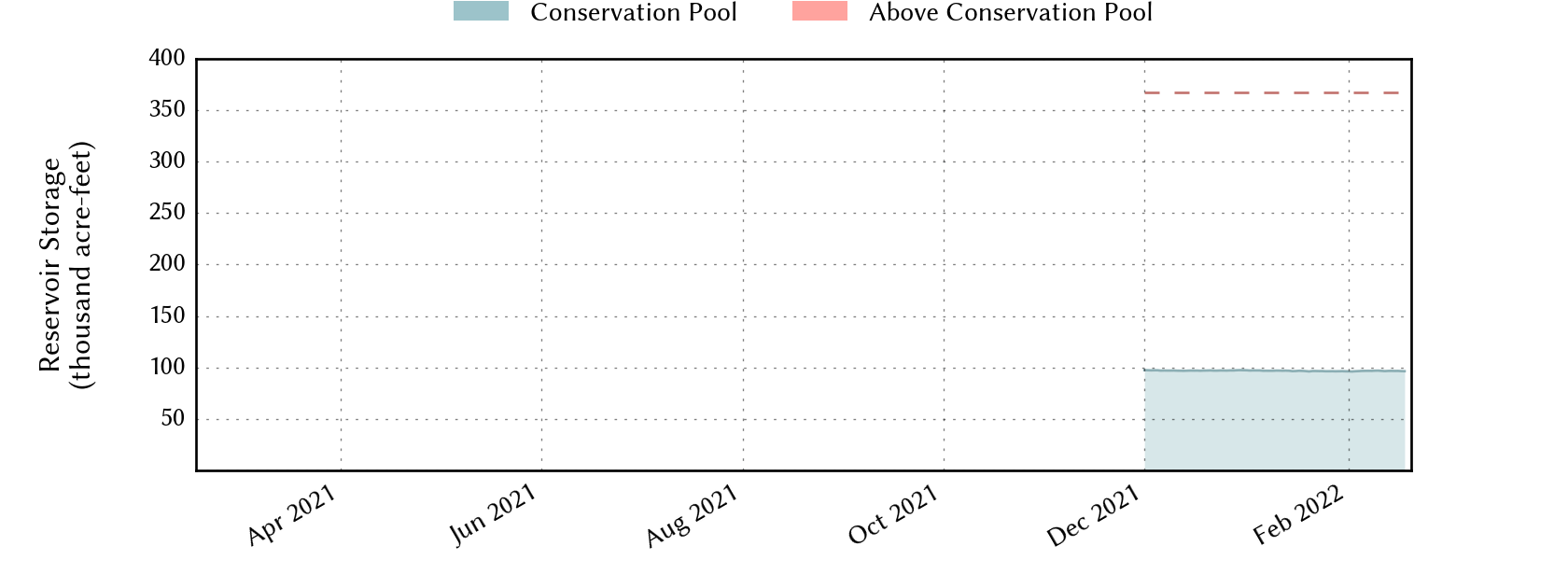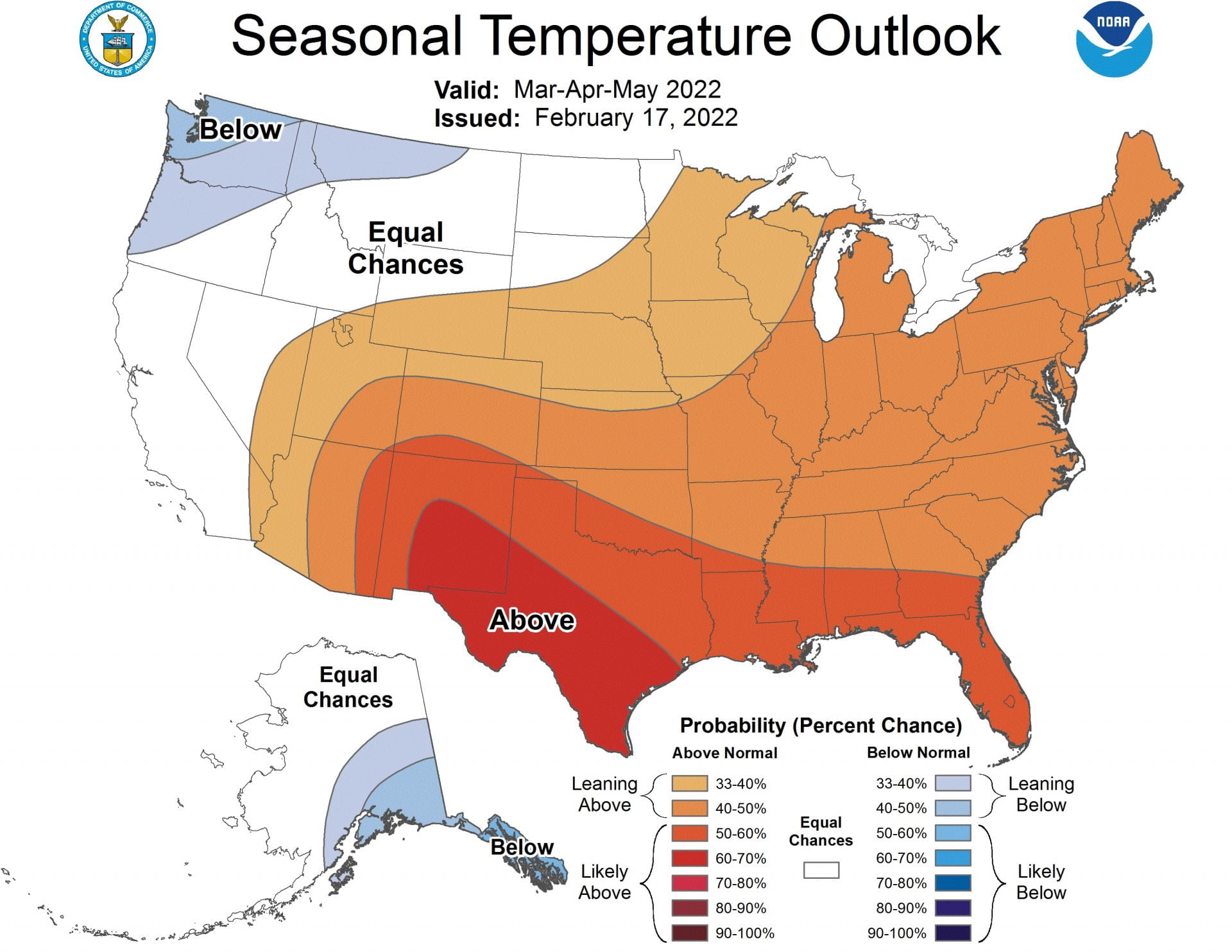SUMMARY:
- 78% of the state is in drought with 88% at least abnormally dry
- Some improvements over the last month, but drought is expected to re-expand to the entire state over the next three months
- Bois D’Arc Lake in northeast Texas has come online with a conservation capacity of 367,609 acre-feet
I wrote this article on February 18, 2022.
Medina Lake is something of a bellwether for drought in South-Central Texas west of San Antonio, indicating how that part of the Hill Country is doing as well as how recharge to the Edwards Aquifer is going. Built more than 100 years ago, Medina Lake is interesting for several reasons. One is that it straddles the recharge zone for the Edwards Aquifer, leaking water to the subsurface (although the lake discharge from the Trinity Aquifer in its upper reaches). A recent article in the San Antonio Express News notes several interesting details as well:
- The reservoir is currently 25% full (Figure 1).
- A storm dropped 8 inches in the catchment and produced no runoff to the reservoir.
- About 3,100 acre-feet a month leaks into the Edwards Aquifer.
- More than 2,000 farmers have rights to use the water.
- Water from the Edwards Aquifer is only $2 per acre-foot, while water from Medina Lake is $35 per acre-foot.
With dry conditions expected to continue, levels in the lake are expected to further decline.
Figure 1: Reservoir storage in Medina Lake since about 2000 (source).
Over the past 30 days, we’ve seen the usual wetter-in-the-east-and-drier-in-the-west pattern with westernmost regions of the state (Figure 2a). Compared to normal conditions, we did much better than last month; however, we still received below normal precipitation for most of the state (Figure 2b). Rain over the past 90 days — a big driver for drought conditions — remains below normal for almost the entire state with most of the state having received less than 50% of normal precipitation (Figure 2c).
Figure 2a: Inches of precipitation that fell in Texas in the 30 days before February 18, 2022 (modified from source). Note that cooler colors indicate lower values and warmer indicate higher values. Light grey is no detectable precipitation.
Figure 2b: Rainfall as a percent of normal for the 30 days before February 18, 2022 (modified from source).
Figure 2c: Rainfall as a percent of normal for the 90 days before February 18, 2022 (modified from source).
The amount of the state under drought conditions (D1–D4) decreased from 85.2% four weeks ago to 77.6% today (Figure 3a) with drought retreating from parts of the coast and Far West Texas (Figure 3b). Extreme Drought has remained about the same at 25% of the state (Figure 3a). In all, 88.2% of the state remains abnormally dry or worse (D0–D4; Figure 3a), down from 96.5% four weeks ago.
Figure 3a: Drought conditions in Texas according to the U.S. Drought Monitor (as of January 18, 2022; source).
Figure 3b: Changes in the U.S. Drought Monitor for Texas between January 18, 2022, and February 15, 2022 (source).
The North American Drought Monitor, which runs a month behind, continues to show drought over much of the western United States with drought conditions looking similar to those of last month (Figure 4a). Precipitation in the vast majority of the Rio Grande watershed in Colorado and New Mexico over the last 90 days was less than normal (Figure 4b).
Conservation storage in Elephant Butte Reservoir — an important source of water for the El Paso area — increased from 9.4% full last month to 10.5% today (Figure 4c), just above historic (since 1990) lows (the blip is, I presume, just a blip).
The Rio Conchos Basin in Mexico, which confluences into the Rio Grande just above Presidio and is the largest tributary to the Rio Grande, remains partially abnormally dry in the Sierra Madre Occidental (Figure 4a). Combined conservation storage in the Amistad and Falcon reservoirs increased slightly from 36.5% last month to 36.8% full today, about 23 percentage points below normal for this time of year (Figure 4d).
Figure 4a: The North American Drought Monitor for January 31, 2021 (source).
Figure 4b: Percent of normal precipitation for Colorado and New Mexico for the 90 days before January 21, 2022 (modified from source). The red line is the Rio Grande Basin. I use this map to see check precipitation trends in the headwaters of the Rio Grande in southern Colorado, the main source of water to Elephant Butte Reservoir downstream.
Figure 4c: Reservoir storage in Elephant Butte Reservoir since 2020 with the median, min, and max for measurements from 1990 through 2021 (graph from Texas Water Development Board).
Figure 4d: Reservoir storage in Amistad and Falcon reservoirs since 2020 with the median, min, and max for measurements from 1990 through 2021 (graph from Texas Water Development Board).
A number of basins across the state have flows over the past week below historical 25th, 10th, and 5th flow percentiles (Figure 5a). Statewide reservoir storage is at 77.9% full as of today, down 127,000 acre-feet and 78.3% full a month ago, about four percentage points below normal for this time of year (Figure 5b). Unusual for this time of year, more reservoirs in the eastern part of the state have fallen below 90%, and now 80%, full (Figure 5c). The “red” reservoir northeast of Dallas (between 20 and 30% full) is accurately but perhaps unfairly red since it, Bois D’Arc Lake, is newly born and just started its initial inundation (Figure 5d). Congratulations to the proud parents!
Figure 5a: Parts of the state with below-25th-percentile seven-day average streamflow as of February 18, 2022 (map modified from U.S. Geological Survey).
Figure 5b: Statewide reservoir storage since 2020 compared to statistics (median, min, and max) for statewide storage from 1990 through 2021 (graph from Texas Water Development Board).
Figure 5c: Reservoir storage as of February 18, 2022 in the major reservoirs of the state (modified from Texas Water Development Board).
Figure 5d: Hydrograph of the month—Reservoir storage in Bois D’arc Lake, the state’s newest (and newly inundated) reservoir (graph from Texas Water Development Board).
Sea-surface temperatures in the Central Pacific that in part define the status of the El Niño Southern Oscillation continue to cool deeper into La Niña conditions (Figure 6a), and we remain under a La Niña Advisory. Projections of sea-surface temperatures suggest a 77% chance of remaining in La Niña conditions through the March-May season (an increase from the 67% last month) with a 56% chance of La Nada (neutral) conditions returning in the May-July season (Figure 6b).
Figure 6a. Forecasts of sea-surface temperature anomalies for the Niño 3.4 Region as of January 19, 2022 (modified from Climate Prediction Center and others). “Range of model predictions -1” is the range of the various statistical and dynamical models’ projections minus the most outlying upper and lower projections. Sometimes those models get a little craycray!
Figure 6b. Probabilistic forecasts of El Niño, La Niña, and La Nada (neutral) conditions (graph from the Climate Prediction Center and International Research Institute).
The U.S. Seasonal Drought Outlook through May 2022 looks similar for Texas from last month but is now showing the drought retreating from Arkansas and Louisiana to the Texas border (Figure 7a). Regardless, continuing or developing for the entire state, including the areas that recently came out of drought (Figure 7a). The three-month temperature outlook projects warmer-than-normal conditions for the entire state (Figure 7b), while the three-month precipitation outlook favors drier-than-normal conditions for most of state (Figure 7c).
Figure 7a: The U.S. Seasonal Drought Outlook for February 17, 2022, through May 31, 2022 (source).
Figure 7b: Three-month temperature outlook for March-April-May 2022 (source).
Figure 7c: Three-month precipitation outlook for March-April-May 2022 (source).




















